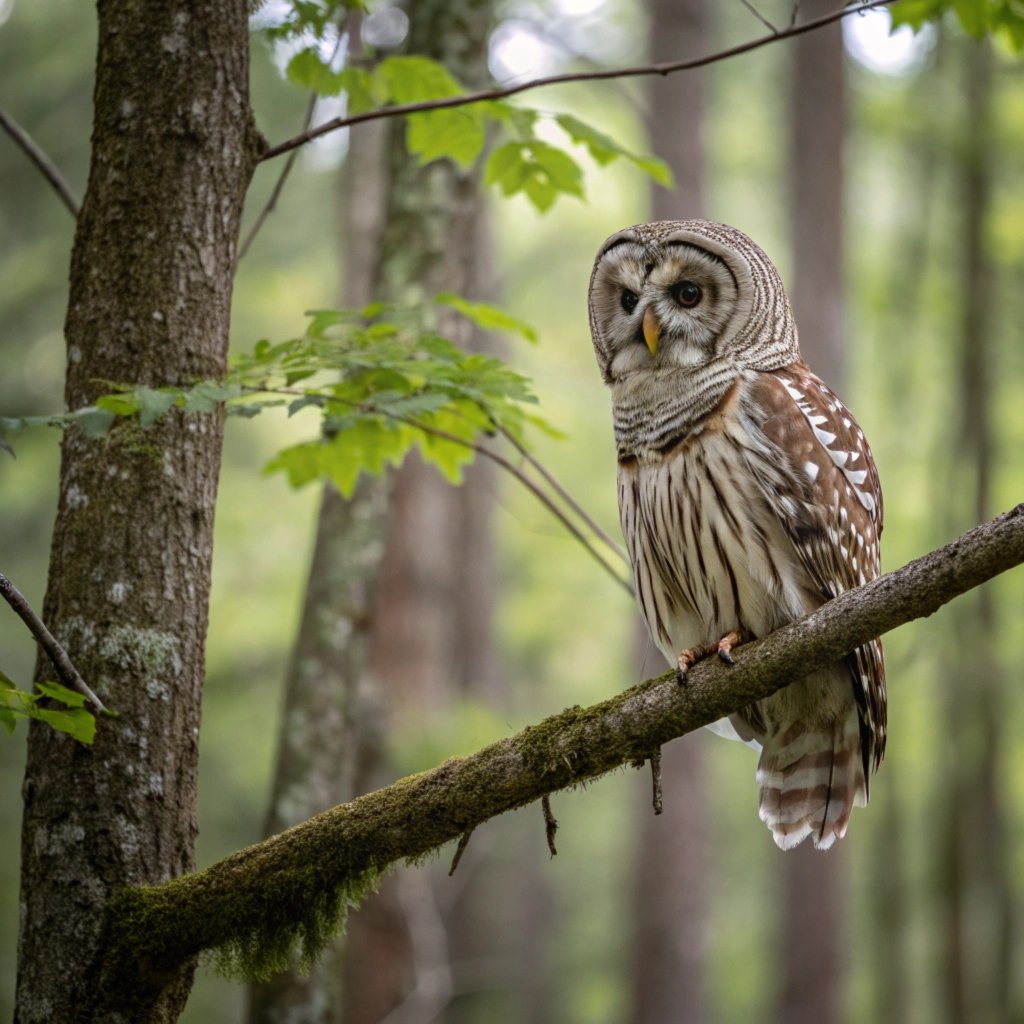The Fascinating World of Owl Legs: A Comprehensive Guide to the Unique Characteristics, Adaptations, and Role of Owl Legs in their Survival
Owls, the majestic creatures of the night, captivate us not only with their striking appearance but also with their incredible adaptations.
One such remarkable feature that embodies their evolutionary brilliance is their legs. While often hidden beneath a cloak of feathers, owl legs play a crucial role in their hunting prowess and overall survival.
Understanding the unique characteristics of these legs helps us appreciate how these birds navigate their environments.
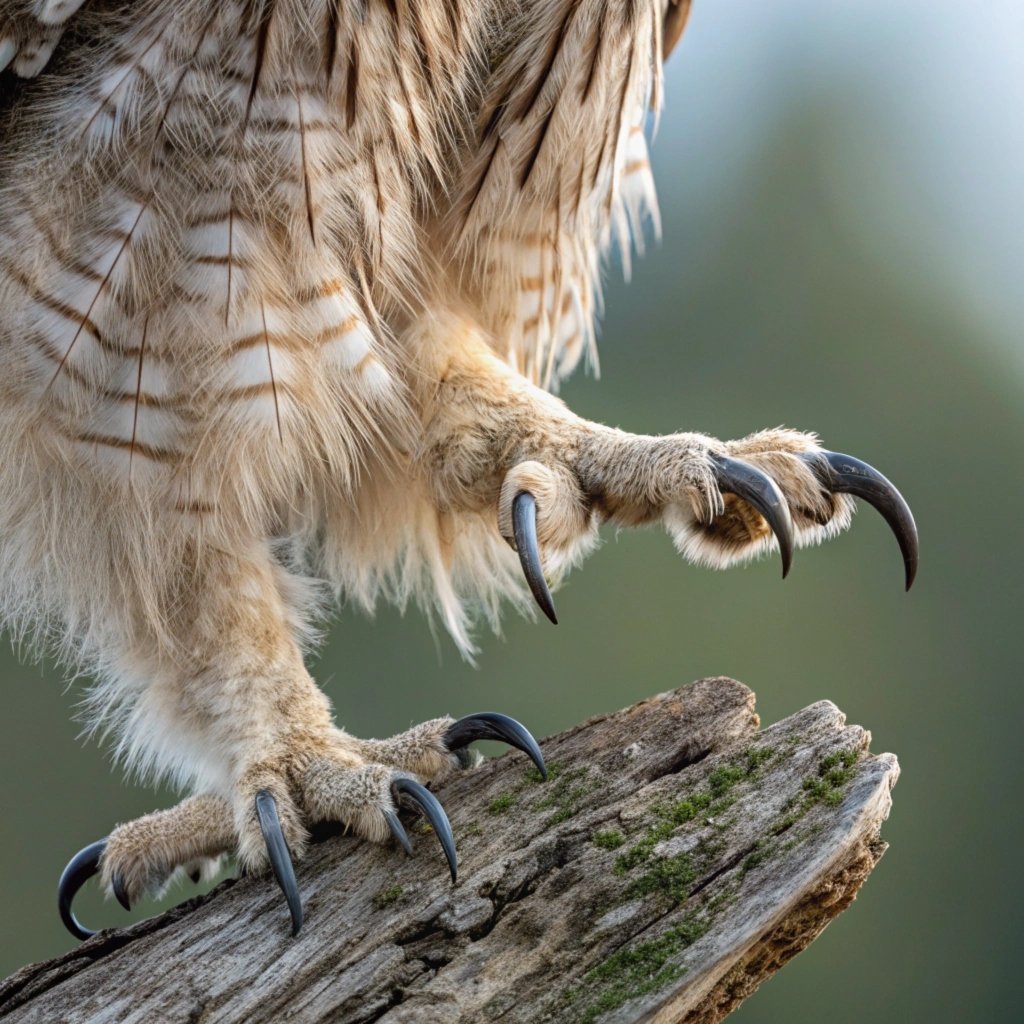
Key Takeaways:
Here are the key takeaways for the blog post on owl legs:
- Owl legs are surprisingly long and often hidden beneath feathers, creating an illusion of a compact body.
- The unique anatomy of owl legs includes short thighs, elongated shin bones, and a specialized foot structure.
- Owls have zygodactyl feet with four digits, allowing for exceptional grip and versatility in hunting and perching.
- The powerful talons of owls can exert significant pressure, with some species capable of crushing bones.
- Owl legs play a crucial role in their silent flight, contributing to their stealth as nocturnal predators.
- Leg feathers serve multiple functions, including insulation, protection, and enhancing sensory input.
- The muscular system in owl legs provides strength and precision for hunting and maintaining balance.
- Owl legs show remarkable adaptations to different environments, varying in length and feathering across species.
- Owls can lock their legs in place while perching, conserving energy and maintaining stability.
- Owl leg structure contributes significantly to their overall balance during flight and when perched.
- Leg injuries can be particularly challenging for owls, often requiring specialized care and rehabilitation.
- Ongoing research and conservation efforts focus on understanding and protecting the unique characteristics of owl legs.
- The study of owl legs has potential applications in fields such as robotics and aviation.
- Understanding owl leg adaptations is crucial for predicting and mitigating the impacts of environmental changes on owl populations.
- The versatility and efficiency of owl legs showcase the evolutionary brilliance of these fascinating birds.
The Hidden Marvels of Owl Leg Anatomy
Contrary to popular belief, owls have surprisingly long legs. These legs are often concealed by feathered “skirts,” creating the illusion of a compact body.
The anatomy of owl legs is a testament to their role as top predators. While different owl species may have slight variations based on their preferred habitats, the basic structure remains consistent across the board.
Owls have relatively short thighs (femurs) and elongated tibiotarsus (shin bones). The next bone, called the tarsometatarsus, connects the tibiotarsus to the foot. This unique structure allows for efficient movement and powerful gripping abilities, essential for capturing and subduing prey.
The leg anatomy of owls is a perfect example of how evolution has shaped these birds to be successful hunters in their respective environments.
The Remarkable Foot Structure of Owls
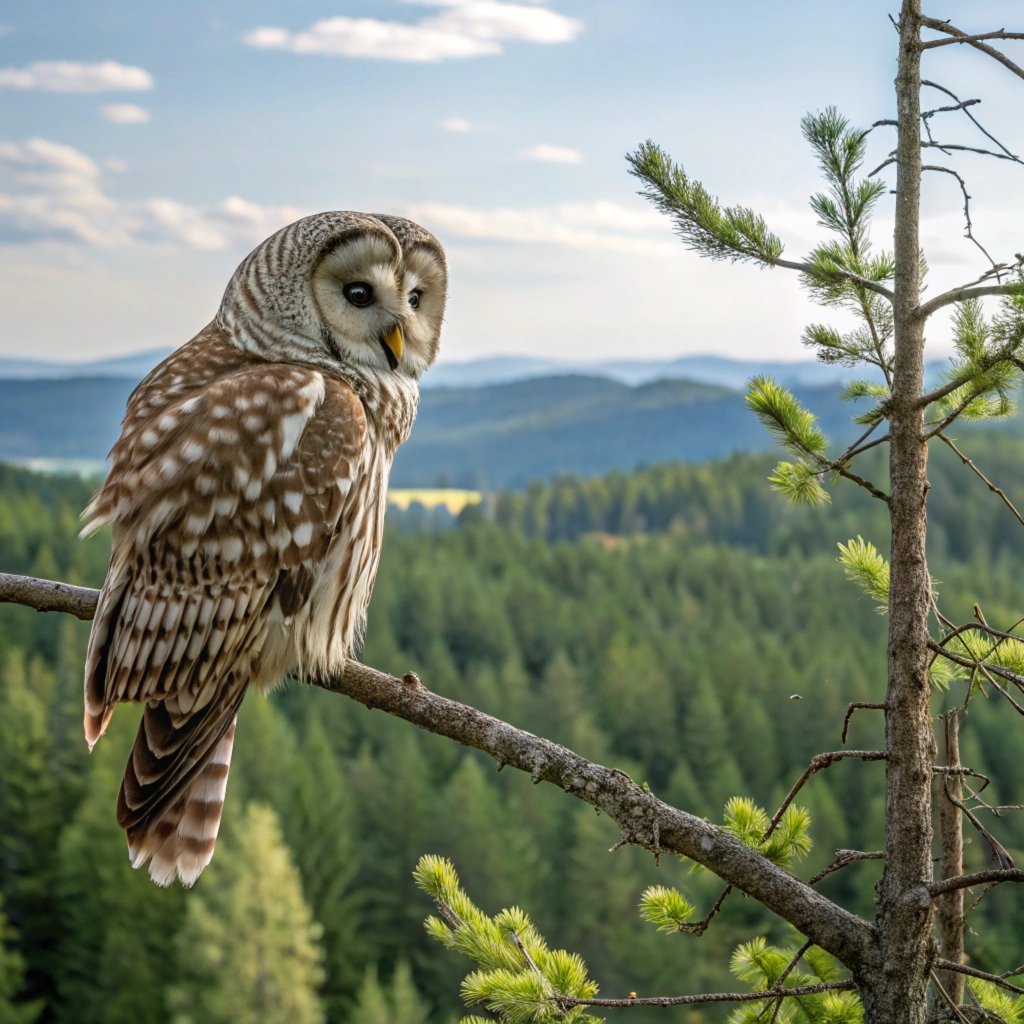
Owl feet are a marvel of natural engineering, serving as their main weapon for hunting and essential tools for survival. Each foot has four digits, commonly referred to as toes, with each digit ending in a single, sharp talon.
The foot anatomy of owls is highly adaptable, allowing for various functions. During flight, three toes point forward and one backward, a common pattern in birds.
However, when clutching prey or perching, the outer front toe can rotate to the rear, thanks to a highly flexible joint. This unique arrangement, known as zygodactyl, provides owls with an exceptional grip and versatility.
Some owl species, particularly those living in colder regions, have feathered feet for added warmth and protection against prey bites. The underside of an owl’s foot is covered with a rough, knobby surface, enhancing their grip on various surfaces and prey.
The Power Behind Owl Legs: Hunting Adaptations
Owl legs are a crucial component of their hunting arsenal, evolved to make these birds efficient predators. The legs serve three main purposes: perching, walking, and catching prey.
One of the most fascinating adaptations is the “locking mechanism” in their feet. This allows owls to lock their feet in place while perching or resting, conserving energy by eliminating the need for constant muscle tension.
When hunting, owls can spread their razor-sharp talons wide apart, increasing their chances of successfully capturing prey. The ability to rotate their toes also contributes to their hunting success.
Owls can apply significant pressure with their talons – some species, like the Great Horned Owl, can exert up to 300 pounds per square inch, enough to crush bones. This powerful grip ensures that once caught, prey has little chance of escape, making owls formidable hunters in their ecosystems.
The Surprising Length of Owl Legs
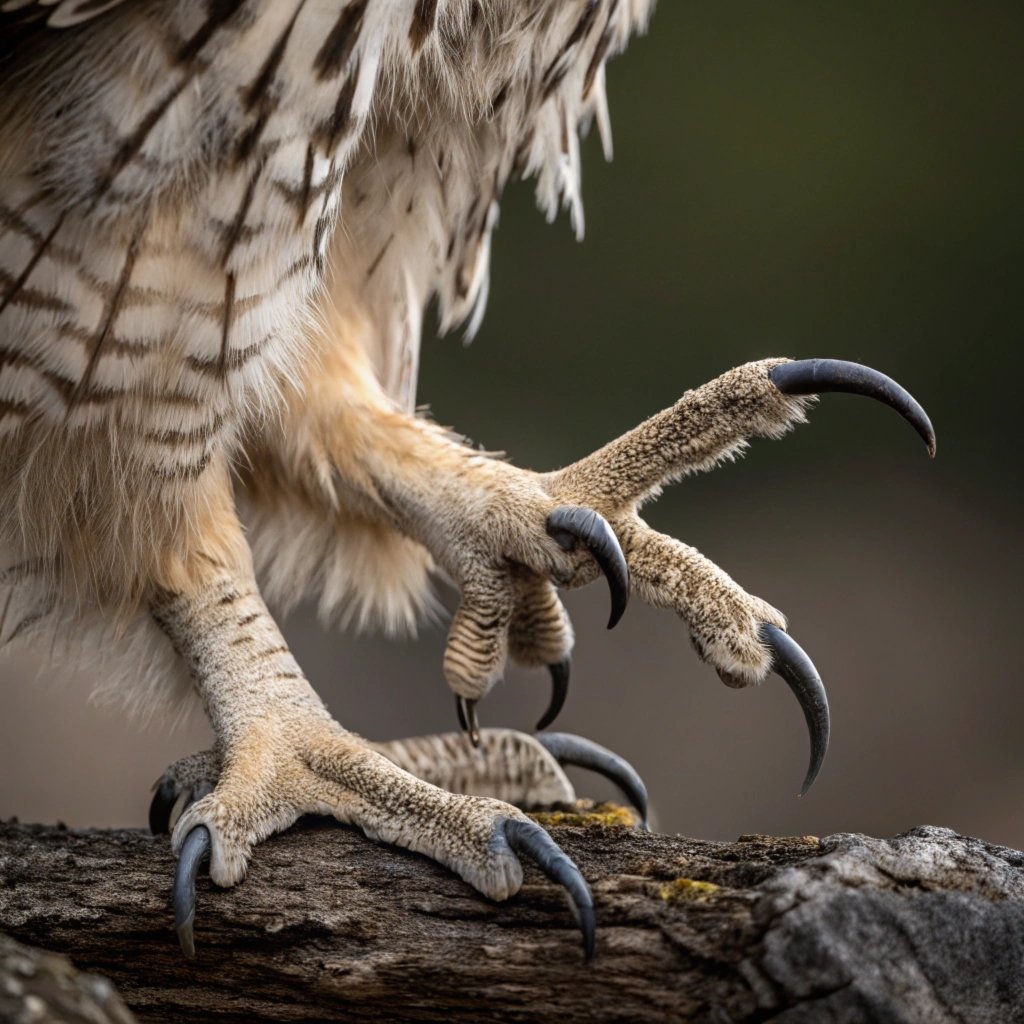
One of the most intriguing aspects of owl anatomy is the unexpected length of their legs. Compared to most birds, owls have relatively short thigh bones and long shin bones.
Their knees are located near the top of their legs, close to the body, and are typically hidden under feathers. This unique structure often leads to misconceptions about the true length of owl legs.
The bone structure of owl legs is somewhat similar to that of mammals, with joints and even ankles playing crucial roles in stability and precision.
However, the proportions differ significantly, with owls having shorter femurs and longer shins compared to humans. The length of owl legs can vary greatly depending on the species, their size, environment, and hunting methods.
Smaller owl species tend to have shorter legs, while larger ones often possess longer limbs. This variation in leg length is an adaptation to different hunting environments and techniques, showcasing the remarkable diversity within the owl family.
The Role of Owl Legs in Silent Flight
Owl legs play a crucial role in one of the most remarkable abilities of these birds – their silent flight. The structure and positioning of owl legs contribute significantly to their ability to move through the air with minimal noise.
The long, thin legs of owls are designed to create as little air disturbance as possible during flight. When an owl is in flight, its legs are typically tucked close to the body, covered by feathers. This streamlined position helps to reduce air resistance and maintain the owl’s silent approach.
The lightweight yet strong bones in owl legs also contribute to their overall flight efficiency. By having less weight in their extremities, owls can maintain better balance and control during flight.
This adaptation is particularly important for their hunting strategy, allowing them to approach prey undetected.
The combination of leg structure and feather arrangement enables owls to be masters of stealth, making them some of the most effective nocturnal predators in the animal kingdom.
Owl Leg Feathers: More Than Just Insulation
The feathers covering owl legs serve multiple important functions beyond mere aesthetics. In many owl species, especially those inhabiting colder regions, leg feathers provide crucial insulation against harsh temperatures.
This adaptation allows owls to maintain their body heat even in extreme cold, enabling them to hunt and survive in challenging environments. However, the role of these feathers extends beyond temperature regulation.
Leg feathers also offer protection against potential bites or scratches from prey during hunting. They act as a buffer, reducing the risk of injury when owls are grappling with their catch.
Additionally, these feathers enhance the owl’s sense of touch, providing valuable sensory input when holding prey. The texture and density of leg feathers can vary among owl species, reflecting their specific adaptations to different habitats and hunting strategies.
In some cases, the feathering on owl legs can even aid in silent movement, further contributing to their stealth capabilities.
The Zygodactyl Foot: A Unique Owl Adaptation
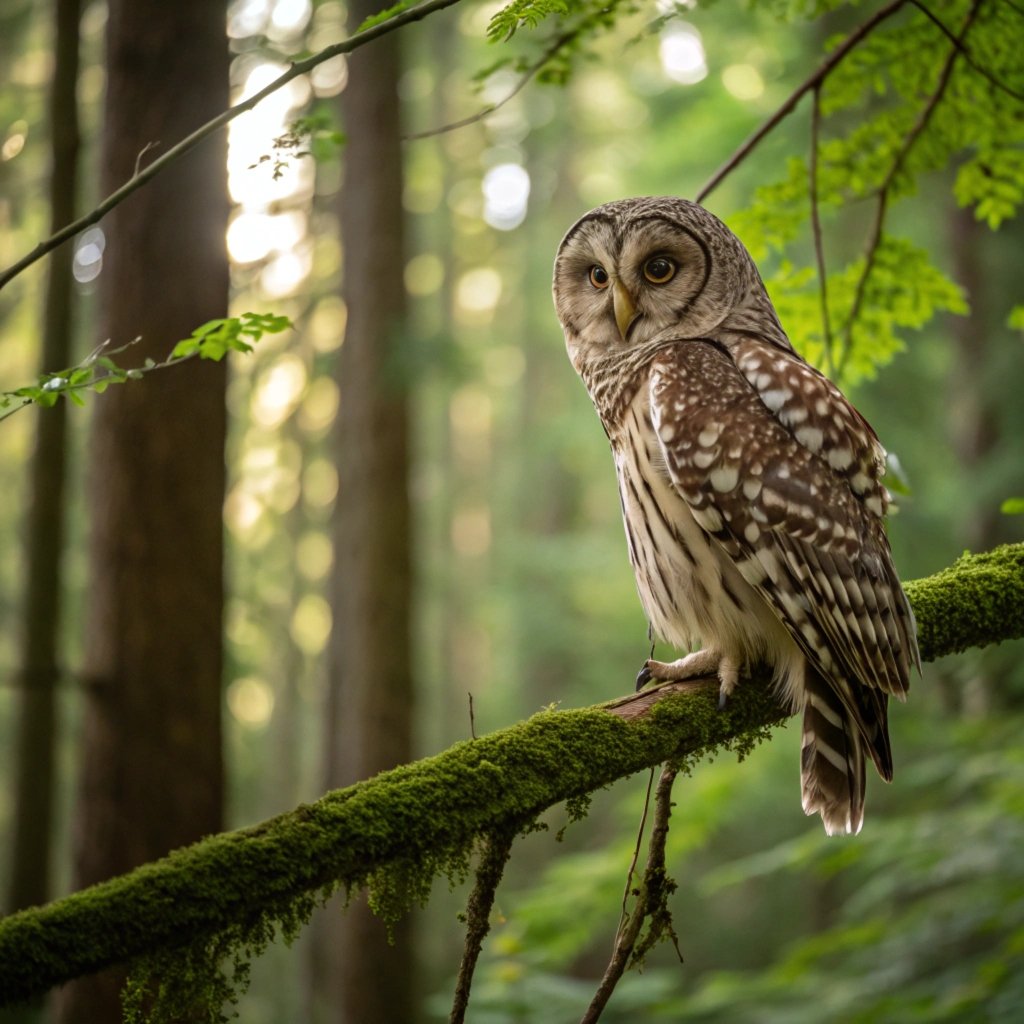
One of the most distinctive features of owl feet is their zygodactyl arrangement. This term refers to the unique positioning of their toes – two facing forward and two facing backward. This adaptation sets owls apart from many other bird species and provides them with significant advantages.
The zygodactyl foot structure allows owls to have an incredibly strong and versatile grip. When perching, this arrangement provides excellent stability, allowing owls to maintain their position even in strong winds or on precarious branches.
During hunting, the zygodactyl foot becomes a powerful tool. Owls can spread their toes wide, increasing the area they can grasp and improving their chances of catching prey.
The ability to rotate one of their toes adds further flexibility to their grip. This adaptation is particularly useful when handling different sizes of prey or when adjusting their hold during flight.
The zygodactyl foot is a prime example of how evolution has shaped owl anatomy to perfectly suit their lifestyle and hunting needs.
Owl Leg Muscles: The Power Behind the Hunt
The muscular system in owl legs is a marvel of natural engineering, providing these birds with the strength and precision needed for their predatory lifestyle. Owl leg muscles are particularly well-developed, especially in the thigh area.
These powerful muscles enable owls to exert significant force when gripping prey or perching. The strength of these muscles is crucial for hunting, allowing owls to quickly subdue their catch and prevent escape.
Interestingly, the arrangement of muscles in owl legs also contributes to their silent flight. The muscles work in harmony to control leg and foot movements, minimizing any unnecessary motion that could create noise.
This muscular control extends to their ability to land silently on branches or other perches. The leg muscles of owls are also adapted for endurance, allowing them to maintain their grip for extended periods without fatigue.
This is particularly important when carrying heavy prey or when perching for long durations while scanning for potential meals.
Owl Legs and Environmental Adaptation
The structure and characteristics of owl legs demonstrate remarkable environmental adaptations across different species. Owls inhabiting various ecosystems have evolved leg features that suit their specific habitats and hunting styles.
For instance, owls living in cold climates often have heavily feathered legs and feet, providing insulation against freezing temperatures. In contrast, owls from warmer regions may have less feathering on their legs to aid in heat dissipation.
The length of owl legs can also vary based on their hunting environment. Species that hunt in tall grass or dense vegetation often have longer legs, allowing them to effectively navigate through these habitats and reach their prey.
Burrowing owls, which spend significant time on the ground, have adapted to have slightly shorter, sturdier legs suited for digging and running. These variations in leg structure and feathering across owl species highlight the incredible adaptability of these birds and their ability to thrive in diverse ecosystems around the world.
The Role of Owl Legs in Balance and Perching
Owl legs play a crucial role in maintaining balance, both during flight and while perched. The unique structure of their legs, combined with their zygodactyl feet, provides owls with exceptional stability. When perched, owls can lock their legs in place using a special tendon mechanism.
This allows them to maintain their position without constant muscular effort, conserving energy. The ability to rotate their outer toe also enhances their grip on various surfaces.
During flight, owl legs contribute to balance by adjusting their position. Owls can extend or retract their legs to shift their center of gravity, aiding in precise maneuvering.
This is particularly important during hunting, where quick adjustments can mean the difference between a successful catch and a missed opportunity. The long, slender structure of owl legs also contributes to their overall agility, allowing for swift and silent movements when necessary.
Owl Leg Injuries: Challenges and Recovery
Despite their robust design, owl legs are not immune to injuries and challenges. In the wild, owls may face leg injuries from various sources, including encounters with prey, collisions, or entanglement in human-made structures.
Leg injuries can be particularly devastating for owls, as they rely heavily on their legs for hunting and survival. Common injuries include fractures, dislocations, and soft tissue damage. Recovery from such injuries can be challenging, often requiring specialized care and rehabilitation.
In rehabilitation settings, veterinarians and wildlife experts work to treat leg injuries through a combination of medical interventions and physical therapy.
The recovery process often involves ensuring proper alignment of bones, managing pain and inflammation, and gradually reintroducing the owl to normal leg use.
Successful rehabilitation of owl leg injuries is crucial for their return to the wild, as fully functional legs are essential for their hunting and overall survival.
The Future of Owl Leg Research and Conservation
As our understanding of owl anatomy and behavior continues to grow, research into owl legs remains an important area of study. Future research may focus on further exploring the biomechanics of owl legs, potentially leading to innovations in fields such as robotics and aviation.
Conservation efforts also play a crucial role in protecting owls and their habitats. Understanding the specific needs and adaptations of owl legs can inform conservation strategies, particularly for species facing habitat loss or other threats.
Ongoing research may also uncover new insights into how owl legs adapt to changing environments, which could be valuable in predicting and mitigating the impacts of climate change on owl populations.
Additionally, advancements in wildlife rehabilitation techniques for leg injuries could improve the chances of recovery for injured owls.
As we continue to study and appreciate the unique characteristics of owl legs, we not only enhance our scientific knowledge but also strengthen our ability to protect these magnificent birds for future generations.
FAQs
How long are owl legs compared to their body size?
Owl legs are surprisingly long, often accounting for up to half of their total height. However, this can vary among species, with some having proportionally longer legs than others.
Do all owls have feathered legs?
Not all owls have feathered legs. While many species, especially those in colder climates, have heavily feathered legs and feet, some owls in warmer regions have less feathering or even bare legs.
How do owl legs contribute to their silent flight?
Owl legs contribute to silent flight by being tucked close to the body during flight, reducing air disturbance. Their lightweight structure also aids in maintaining balance and control without creating noise.
Can owls walk on the ground?
Yes, owls can walk on the ground, although they prefer not to. Some species, like burrowing owls, are more adapted to ground movement and can run at speeds up to 25 mph.
How strong are owl talons?
Owl talons are extremely strong. Some larger species, like the Great Horned Owl, can exert pressure up to 300 pounds per square inch with their talons, enough to crush bones.
Do owls have knees?
Yes, owls do have knees, but they are located high up on the leg, close to the body and usually hidden by feathers. What often appears to be the knee is actually the ankle joint.
How do owl legs help in hunting?
Owl legs are crucial for hunting, providing the strength to capture and hold prey, the flexibility to maneuver through different environments, and the ability to maintain a silent approach.
Can owls rotate their feet?
Yes, owls have a unique adaptation that allows them to rotate their outer toe, switching between having three toes forward and one back, to two toes forward and two back.
How do owl legs adapt to different environments?
Owl legs adapt to different environments through variations in length, feathering, and muscle structure. These adaptations help owls thrive in diverse habitats, from arctic tundra to tropical forests.
What happens if an owl injures its leg?
Leg injuries can be severe for owls, often requiring specialized veterinary care and rehabilitation. Recovery is crucial, as fully functional legs are essential for an owl’s survival in the wild.

Hello, I’m Emily Price, the founder of Birds Affection. As a passionate bird enthusiast and spiritual seeker, I’ve always been fascinated by the symbolic meanings and mystical connections between birds and our lives. On this website, I share my knowledge and insights on the spiritual significance of various bird species, exploring their roles as messengers, guides, and teachers. Through my writing, I aim to inspire and educate others on the profound wisdom and beauty that birds bring to our world. Join me on this journey as we delve into the enchanting realm of bird symbolism and discover the hidden meanings behind these magnificent creatures.

